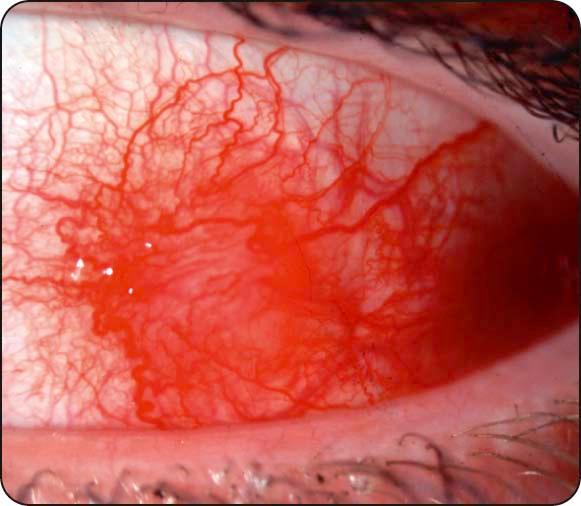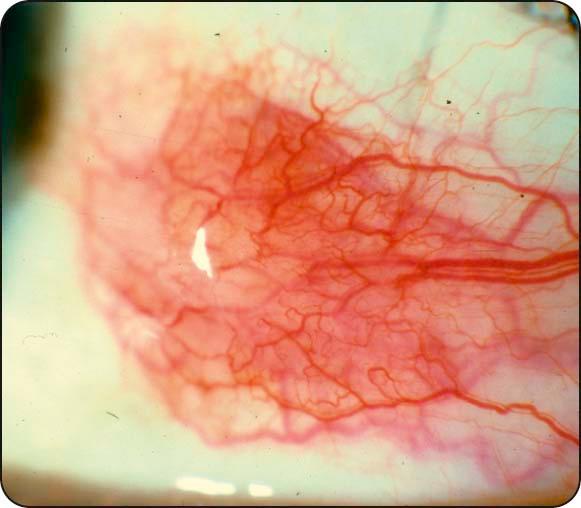Physical Address
304 North Cardinal St.
Dorchester Center, MA 02124
Diagnosis
Presentation: acute onset of redness and mild discomfort.
Signs: hyperaemia may be sectoral (typically interpalpebral; Fig. 8.1 ) or diffuse.

Course: spontaneous improvement occurs within several days, but recurrences may occur.
Treatment: not required if mild; otherwise lubricants or a weak steroid four times daily for 1–2 weeks.
Diagnosis
Presentation: less acute onset than simple episcleritis with redness and discomfort worsening over 2–3 days.
Signs: (a) one or more tender interpalpebral nodules ( Fig. 8.2 ), and (b) absence of deeper scleral thickening; after several attacks, the vessels surrounding the inflamed area may become permanently dilated.

Course: more prolonged than simple episcleritis.
Treatment: similar to that of simple episcleritis.
Become a Clinical Tree membership for Full access and enjoy Unlimited articles
If you are a member. Log in here